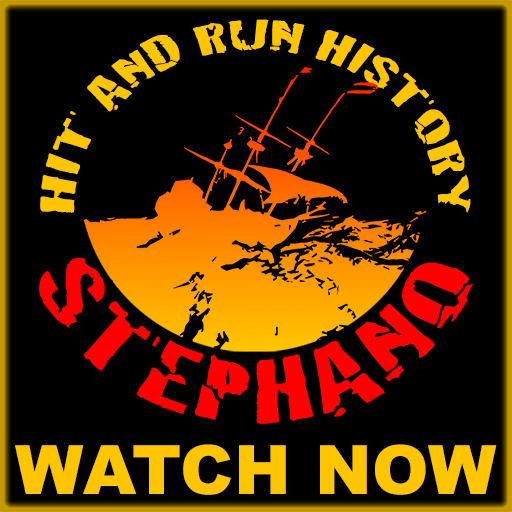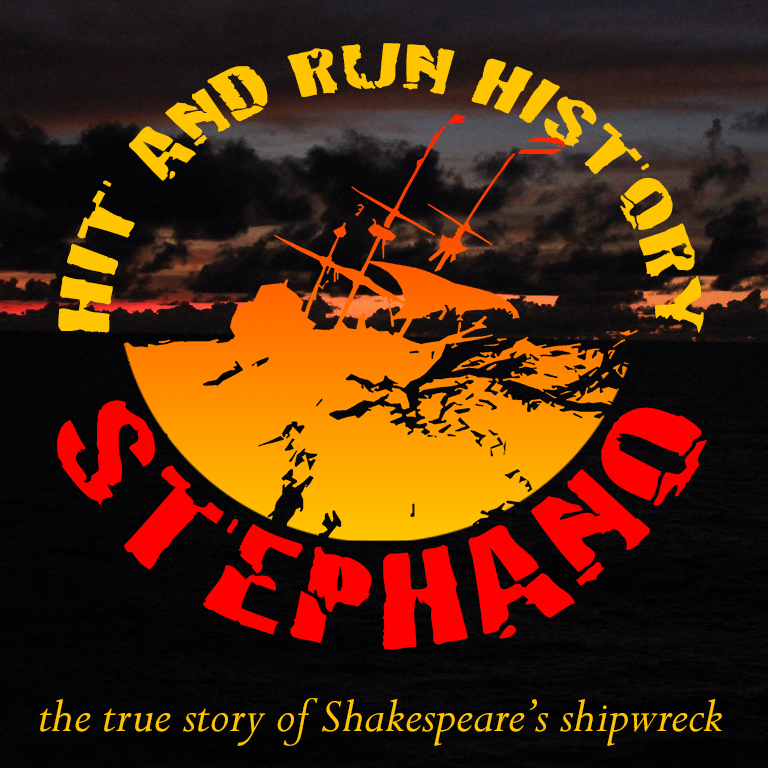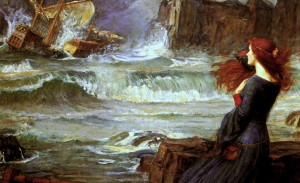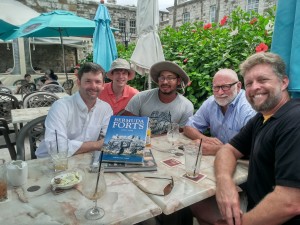SHAKESPEARE’S SHIPWRECK IN YOUR CLASSROOM
Native Land Conservancy acknowledged for Rhode Island PBS education doc “Stephano”
Pocahontas knew him. Squanto stayed at his house. Shakespeare wrote about him. And he is coming to schools this fall, with a nod to the efforts of indigenous people.
Stephano: The True Story of Shakespeare’s Shipwreck premiered on Rhode Island PBS early in 2021. Two-time Emmy nominated producer Andrew Giles Buckley and his crew of Hit and Run History are hot on the trail of the Stephen Hopkins, a Virginia-bound castaway who found his way not only onto the decks of the Mayflower a decade later, but immortalized on stage at the drunken Stephano in Shakespeare’s final play, The Tempest.
In 2022, the Rhode Island PBS Education Services Department is working with curriculum creators to craft classroom resources based on the historical figures and references in the film. Coupled with film clips, these resources will be uploaded to Rhode Island PBS LearningMedia, accessible to teachers and students locally and nationwide. The resource package is expected to be completed by the fall of 2022, and is made possible in part through a grant in recognition of the Native Land Conservancy.
“The Native Land Conservancy is honored to be supported through the grantor’s generosity and to be a part of telling this powerful story,” said NLC Director Diana Ruiz.
The 90-minute film follows the story of the only Mayflower passenger who had been to North America previously. A decade earlier, Hopkins was aboard a Jamestown-bound ship whose wreck on Bermuda inspired the Bard’s final play.
Shot on location, the intrepid Hit and Run History team retraces Hopkins’ life crisscrossing the Atlantic, intersecting with two of the most influential Native Americans of the time, Pocahontas and Squanto. Wampanoag and Pawmunkey tribe members’ involvement pulls the focus of Stephano onto the key roles of Native peoples in England before the Mayflower departure in 1620.
Buckley, a Hopkins descendant, grew up hearing stories that New Plymouth’s iconoclast tavern keeper may have the model of The Tempest’s drunken and mutinous Stephano. In their Gumshoe Historian style, Hit and Run History seeks out the reality of a man who was everywhere at the founding of America.
During the 2021 screening tour, another Mayflower descendant asked about supporting educational efforts for Stephano.
“Hopkins seemed to have a special relationship with Native Americans, learning valuable skills from them,” Buckley said. “So this donation intends to highlight an indigenous group working to preserve their legacy. NLC is making great strides there.”
The Native-run conservation group’s mission is to rescue, protect, and restore land back to its original state wherever possible.
Made in partnership with Rhode Island PBS and the Cape Media Center, Stephano also aired on WETA in DC, NHPBS, WCTE and PBS SoCal in Los Angeles. Production of Stephano was made possible through grants from the Massachusetts Foundation for the Humanities, Cape Air and the Massachusetts Cultural Council.
Facebook ⧫ Shakespeare Unlimited podcast feature ⧫ Instagram

STEPHANO – watch on demand
Stephano: The True Story of Shakespeare’s Shipwreck is now available to watch across the globe!
Our theatrical release contains two additional scenes that were cut from the broadcast version. Go to Vimeo and rent to WATCH NOW.
And go here for info on broadcasts and screenings.
Stephano on Rhode Island PBS
Public media’s Mayflower documentary broadcast premiere slated for January
A pandemic may have pushed off events for the 400th anniversary of the arrival of the Mayflower until 2021, but the New Year will kick off with a new story on the airwaves. January will see the first broadcast of Hit and Run History’s Stephano: The True Story of Shakespeare’s Shipwreck on Rhode Island PBS.
Two-time Emmy-nominated producer Andrew Giles Buckley and his crew are hot on the trail of Stephen Hopkins, a Virginia-bound castaway who found his way not only onto the decks of the Mayflower a decade later, but immortalized on stage as the drunken Stephano in Shakespeare’s The Tempest.
The 90-minute film follows the story of the only Mayflower passenger who had been to North America previously. A decade earlier, Hopkins was aboard a Jamestown-bound ship whose wreck on Bermuda inspired the Bard’s final play. Shot on location, the intrepid Hit and Run History team retraces Hopkins’ life crisscrossing the Atlantic, intersecting with the likes of Pocahontas and Squanto.
Buckley, a Hopkins descendant, grew up hearing stories that New Plymouth’s iconoclast tavern keeper may have the model of The Tempest’s drunken and mutinous Stephano. In their Gumshoe Historian style, Hit and Run History seeks out the reality of a man who was everywhere at the founding of America.
Stephano will air on Rhode Island PBS’s WSBE on January 15 at 8 PM, January 16 at noon, January 19 at noon, and January 20 at 1 AM.
Stephano is the first joint production of the Cape Media Center, southeastern Massachusetts’ largest public access station, and Rhode Island PBS. This will be the first full-length broadcast of a Hit and Run History show, prior segments having been aired interstitially on Rhode Island PBS and featured on WGBH’s History website.
Hit and Run History was awarded a pre-production grant for Stephano by the Massachusetts Foundation for the Humanities, and 21 Cultural Council Grants from communities across Massachusetts to hold local screenings in 2020. Post-production funding was raised through crowdsourcing and support from Cape Air.
HRH’s Thanksgiving Trip featured in the Cape Cod Times
As the country celebrates Thanksgiving back home, we’re in England retracing the footsteps of one of Plymouth’s first settlers, Stephen Hopkins, and Squanto, the Native American whose name may be known, but whose story is still hidden from memory. Chris Wessling, a member of the Mashpee Wampanoag Tribe joins us on this venture to the UK, where we reconstruct Squanto’s kidnapping from his homeland and eventual return to North America.
While there, the crew joins the people of Plymouth, England, for their own celebration of the Mayflower’s journey with a Thanksgiving “Illuminate” ceremony. Be part of this transatlantic ceremony by watching LIVE on Thanksgiving Day. Just click here at NOON on Thanksgiving.
Read about our latest adventure in the Cape Cod Times Article and then consider helping defray the cost of good film-making. All donations are tax-deductible and just in time for #GivingTuesday.
A Wampanoag in Shakespeare’s England on Thanksgiving.
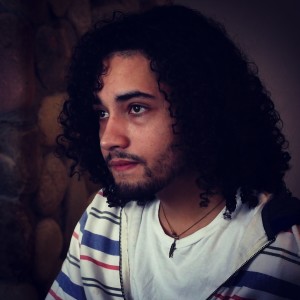 Hit and Run History hits the road…in England
Hit and Run History hits the road…in England
A Wampanoag in Shakespeare’s England on Thanksgiving. Plymouth, England. A Wampanoag Tribal member. They’re all in store over the next two weeks as we cross the pond for and Run History’s latest project, Stephano: The True Story of Shakespeare’s Shipwreck.
On November 20th, the crew flies to England to retrace the steps of Mayflower Passenger Stephen Hopkins, the impetus for Shakespeare’s last play, The Tempest. While there, our gumshoe historians examine the London experiences of Hopkins associate, Squanto, captured and brought to Europe in 1614 as a slave.
Crew member Chris Wessling, a member of the Mashpee Wampanoag Tribe, relives Squanto’s experience as we go to the London house he stayed in. Chris and the crew will then attend a Thanksgiving Ceremony in Plymouth, England, called Illuminate. The folks in Plymouth, England are conducting a countdown to the 400th anniversary of the Mayflower just like our own Plymouth 400th.
Watch the Illuminate Ceremony LIVE with Hit and Run History Thanksgiving Day at noon by clicking here!
Lastly, we hate to ask, but two weeks filming in England is pricey stuff: can you contribute $5-50 towards our trip? All donations are tax deductible.
OR if you’re looking for the perfect holiday gift for that theater fiend or history geek on your list, why not GEAR UP with a official Hit and Run History/Stephano t-shirt or hoodie?
Escape from the Cornucopia
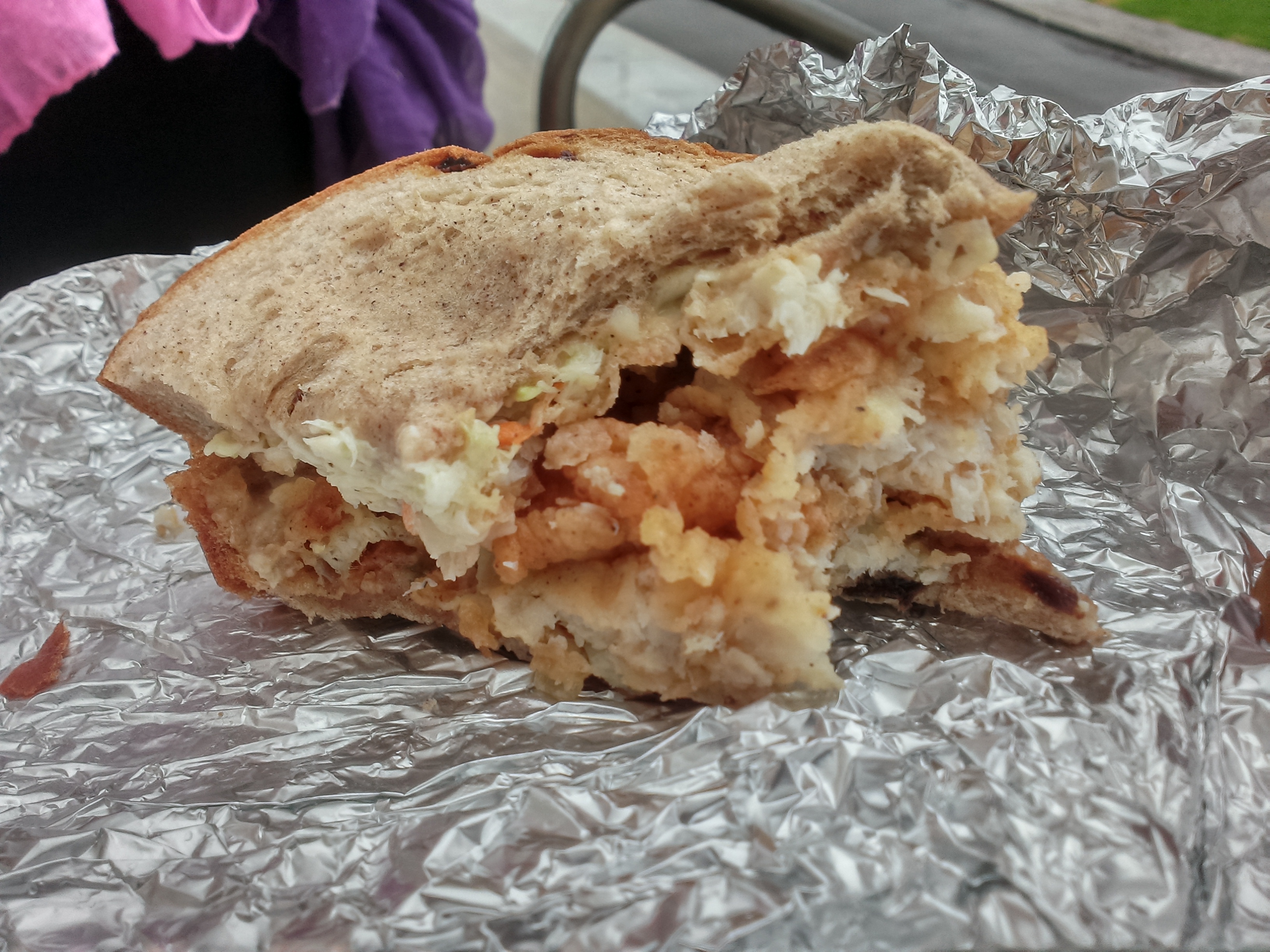 I was actually kind of angry at that fish sandwich. Not that I am often taken to such emotion at food. But on our last day on Bermuda, having been brought to the winner of the Best Fish Sandwich, Art Mels Spicy Dicy, it was impossible to say no to the entire thing.
I was actually kind of angry at that fish sandwich. Not that I am often taken to such emotion at food. But on our last day on Bermuda, having been brought to the winner of the Best Fish Sandwich, Art Mels Spicy Dicy, it was impossible to say no to the entire thing.
What must have been a whole fried filet of the local white fish, breaded and seasoned with something Jen guessed was garlic, then smothered with tartar sauce and cole slaw, served between two slices of thick-cut raisin bread. Half was enough. Jen was smart. She ate half of hers. A completist, I ate all of mine. A good lunch.
It was very, very good. But it was a mistake. We should have shared one. It filled me up to the point I wasn’t even sure I had room for water. Once we got back on our ship, the Norwegian Dawn, I couldn’t eat anything.
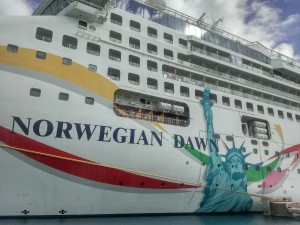
Here we were, for seven days aboard this ship, roundtrip from Boston, with all the delicious food we could want, and I couldn’t partake in the bounty of dinner. Not until 10 p.m. was I able to stomach even a little ice cream. The next morning, I couldn’t be sure I was even hungry when I woke up. French toast and eggs Benedict persuaded me, however.
My appetite would only return that evening, just as we were departing King’s Wharf with two days at sea before our return to Boston.
Along the way, I would be finishing up my readings on the Sea Venture. In 1609, the flagship of the third fleet to the struggling Jamestown Colony would wreck here on the “Isle of Devils” en route from London. For 10 months the castaways worked on ways to escape. But the natural bounty of the uninhabited island, with mild weather, surrounded by coral reefs in the middle of the ocean, abounded with pigs, birds, sea turtles and fish.
Considering the state of public health and nutrition in England at the time, it is no wonder that the colonists stranded on Bermuda actually put on weight. And although the governor, Sir Thomas Gates, led an effort to build vessels in which to proceed to the struggling Jamestown, some of the sailors and colonists would, from time to time, wonder why.
This would include my ancestor, Stephen Hopkins. For his musings on the lack of authority of the Governor of Virginia to give anyone orders here on this island in the Atlantic, Hopkins was thrown in shackles and condemned to death for mutiny. If not for the intercession of a few noteworthy persons and the plight of his wife and children at home, he would have swung from a scaffold. So he wouldn’t have ventured across the ocean again, 10 years later aboard the Mayflower. And I wouldn’t exist.

That story is what brought us here, with the Norwegian Dawn being a perfect way to travel to and from our shoot. Time to relax before arriving, time to reflect afterwards, with very limited contact with the rest of the world. With a place to stay and eat all the while in this tiny archipelago. Bermuda, after all, is not the place one can find budget accommodations or meals.
After taking the ferry from one end of Bermuda to the other, in St. George we took a cab to Fort St. Catherine and Gates Bay. Here the shipwreck survivors came ashore. Our cabbie apologized for the beach being so crowded.
We looked north and east along the curving sand that ended at the rocks below the centuries-old fortifications and saw only enough people to fill a school bus. “It’s fine,” we told him, and went snorkeling in clear water that was perhaps a degree or two cooler than the air.
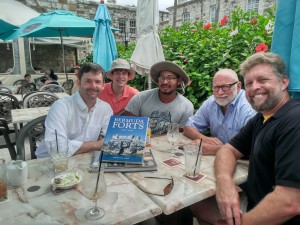 It was hard to leave. In walking back the mile or so to St. George’s, it was very easy to see why Hopkins and others were not in such a hurry to leave this place. How the ease of life compared to that they had come from was preferable – and even more so to the death and disease awaiting them in Virginia. Yet, at the point of the gun, more or less, they did.
It was hard to leave. In walking back the mile or so to St. George’s, it was very easy to see why Hopkins and others were not in such a hurry to leave this place. How the ease of life compared to that they had come from was preferable – and even more so to the death and disease awaiting them in Virginia. Yet, at the point of the gun, more or less, they did.
Two vessels, the Deliverance and the Patience, were built from salvaged parts and local timber, loaded with two weeks’ worth of provisions gathered from the islands, and set off in May 1610. Within a few weeks, the tanned, rested and well-fed castaways of the Sea Venture arrived in Jamestown, and were met by 60 starving colonist-turnedcannibals – of the nearly 500 who had been there the previous fall.
As governor, Sir Thomas Gates would find that the greatest trouble he would have was not with new arrivals to Virginia, but with his fellow survivors of the Sea Venture. Those whose every glance would say, “I told you so.” Certainly, at the establishment of English America, the idea of questioning authority was hatched on this shore of Bermuda and found fertile fields in Virginia.
That’s why we came to this beach. To see how good it really was. Taking the Norwegian Dawn here was the 21st century equivalent of the Sea Venture. And Bermuda was better still. And leaving quite really stuffed full of its goodness and bounty was the same. If home was so bad to force me to seek a new life in a dangerous, unknown outpost, and I were instead brought to paradise, I would certainly question any effort to leave. Moreso, I would resent being forced to work for months just to be delivered into a living nightmare.
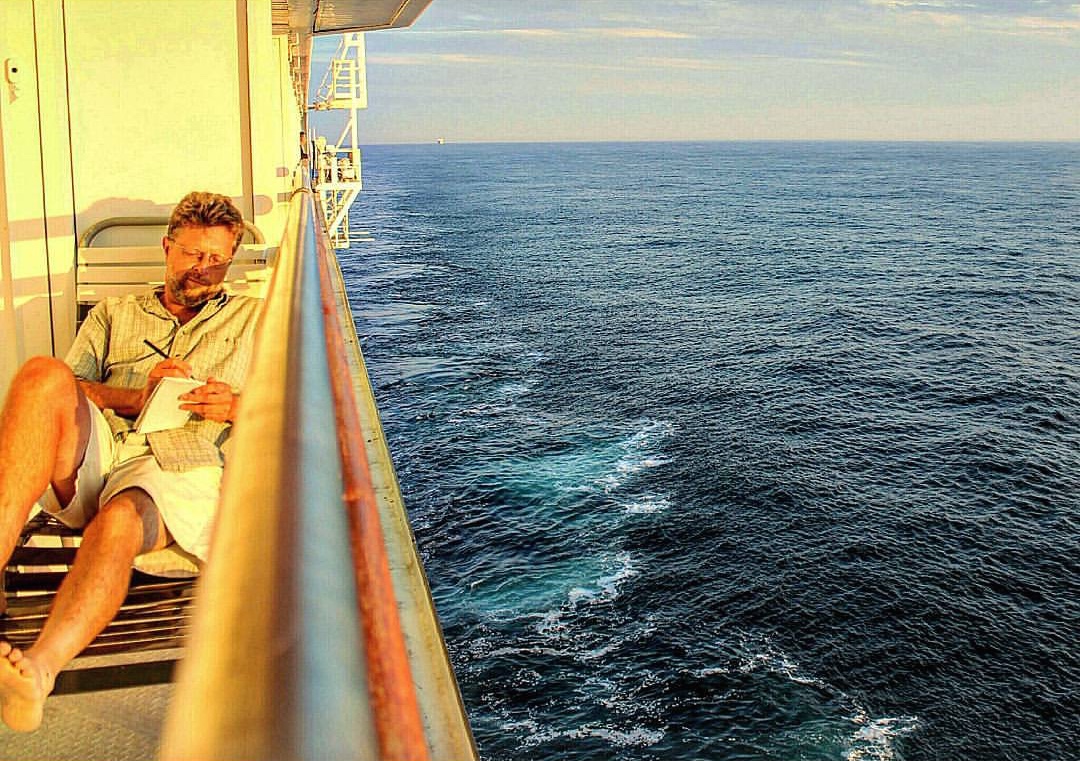
On our balcony overlooking the hundreds of miles of ocean between the Dawn and the Atlantic seaboard, there were hours to explore this. No wonder, 10 years later, in a frigid Provincetown Harbor, did Hopkins and others not of the Separatist community resist the idea that the Virginia Company had any power this far outside their boundaries. No wonder, as soon as things were established in Plymouth, did Hopkins and his family move east, to Cape Cod, while the English colonies moved west.
That is a lesson he would have passed down to his descendants: a distrust of absolute government and organized religion. A lesson hard-learned upon leaving Bermuda with a full belly.
And that’s why I ate the whole sandwich.
Hit and Run History‘s forthcoming documentary, Stephano: The True Story of Shakespeare’s Shipwreck, is a joint production of the Cape Cod Community Media Center and Rhode Island PBS.
DAY 189 of Stephano
Day 192: Strachey would have recognized this scene
Party Bard-y
Shakespeare ties to Cape Cod history showcased in crowdsourcing kickoff
Shakespeare. Shipwrecks. Squanto. They’re all wrapped up in Hit and Run History’s latest project. And on the evening of March 20, the Cape Cod Community Media Center will host the live broadcast of HRH’s launch of the crowdsourcing campaign for Stephano: The True Story of Shakespeare’s Shipwreck.
So far, Cape Cod’s Gumshoe Historians have been on a winning streak. In December HRH was awarded a $10,000 pre-production grant for Stephano from the Massachusetts Foundation for the Humanities. Two weeks later, Rhode Island PBS committed to broadcast Stephano — once it is fully-funded.
“Since then,” says HRH creator and producer Andrew Buckley, “we’ve been going everywhere to film our promotional trailer. Plimoth Plantation, the Jamestown Settlement, the Folger Shakespeare Library in DC, the Blackfriars Theatre in Staunton, Virginia. And every place in between.” Buckley will premiere that robust trailer during “Hit and Run History’s Stephano Kickoff” event.
The one-hour telethon will air live at 7:30 PM on the Cape Cod Community Media Center’s Channel 99 and streamed on capemedia.org. In addition to the promotional trailer featuring HRH’s work of the past two months, there will be live music and a theatrical performance before a studio audience.
Hyannis-based Schuyler Grant and his band The Godspell will be in the studio for three musical numbers, and the Bay Colony Shakespeare Company will perform a scene from Shakespeare’s The Tempest. In between, HRH’s crew will stage readings from historical accounts that connect the play to actual events. Viewers will be directed to the crowdsourcing where they can pledge at various levels to facilitate the documentary. Rewards will be offered based upon the level of support.
“We’re not looking to fund our whole documentary through this show,” says HRH Production Manager Jay Sheehan. “This crowdsourcing campaign will only run for six weeks. But we hope be able to raise enough to fund the first and most difficult leg of our journey, which is filming in England.”HRH will head there to trace the humble beginnings of Stephano a/k/a Stephen Hopkins. When the Mayflower sailed from England in 1620, a late-coming passenger was the only one aboard who already been to the New World. Hopkins’ life up to that point was already harrowing enough for any person.
In 1609, he had sailed with the new Virginia Governor to Jamestown when their ship, Sea Venture, wrecked on Bermuda. Later ashore, Hopkins begged for his life after condemned to death for mutiny. A newly-constructed ship carried the castaways to Jamestown, but salvation was short-lived. The handful of surviving colonists had resorted to cannibalism. Present at the marriage of Pocahontas, Hopkins returned with her and her husband to England. There, the story of the Sea Venture inspired Shakespeare, with Hopkins immortalized as the mutinous drunken butler Stephano.
A decade later, his experience in North America were invaluable to the fledgling Plymouth Colony. Host to Samoset and Squanto, and emissary to Massasoit, Hopkins had seen how quickly a European settlement could fail without good relations with the local tribes.
“Stephano is a story worth telling,” says Buckley, “and our approach to storytelling works to bring in new audiences.” WGBH dubbed the series “snackable history.”
A grassroots production of the Cape Cod Community Media Center, HRH has received numerous accolades and grants for bringing global historical adventures to underserved audiences. Less Ken Burns, and more Anthony Bourdain in style, HRH is featured WGBH’s History site and broadcast on Rhode Island PBS.
Mass Humanities conducts and supports programs that use history, literature, philosophy, and the other humanities disciplines to enhance and improve civic life in Massachusetts.
“Hit and Run History’s Stephano Kickoff” will be held in Studio A at the Cape Cod Community Media Center, 17 Shad Hole Road in Dennisport, MA. The event is open to the public and refreshments will be served. Because seats are limited, guests are asked to please call 508-394-2388 to reserve by 5 PM on Friday March 20.
Shakespeare & Squanto Take to the Road
PBS series takes “A Journey to Pokanoket”
After a shipwreck on Bermuda, encountering the colonists-turned-cannibals of Jamestown, and surviving the deadly first winter in Plymouth, a walk through the Bridgewater Triangle might have felt like a walk in the park for Stephen Hopkins. But grueling 50 miles from Plymouth Rock to the Massasoit Spring in present day Warren, RI – by foot, in two days – remains challenging four centuries later.
Now the Gumshoe Historians of PBS are retracing the route taken by Hopkins and fellow Pilgrim Edward Winslow, led by the Native American Squanto. Part of this journey will be featured in Hit and Run History’s “Stephano: The True Story of Shakespeare’s Shipwreck” coming to Rhode Island PBS in 2016.
The trek was a mission of peace and diplomacy by the newborn English colony to the great sachem of the Pokanoket (now Wampanoag) tribes, Massasoit, at his home village of Sowams in the 1621. But it bears an eerie resemblance to another trio in Shakespeare’s final play, The Tempest. It was a work inspired by Hopkins’ own misadventures on the “Isle of Devils” a dozen years earlier.
“That’s what’s so fascinating about this story,” says HRH producer & creator Andrew Buckley. “In the first half of the film, we travel to Bermuda and Virginia to show how real events led Shakespeare to writing The Tempest. And in the second half, we leave Old England for New England, and it begins to look like life is imitating art.”
Squanto will be joining HRH for this journey, in a fashion. Christian Wessling, a member of the Wampanoag tribe, portrayed the young enslaved Tisquantum (Squanto) in the educational exhibit “Captured: 1614.” Funded by Plymouth 400 and produced by the Indian Spiritual and Cultural Training Council and SmokeSygnals Marketing and Communications, the installation brings to light a history with a monumental effect on the Wampanoag tribe, their relationship with the Pilgrims, and the founding of Plymouth Colony.
Between 7 and 8 AM on Tuesday September 15, HRH’s crew will rendezvous at State Pier in Plymouth, near Plymouth Rock and the Mayflower II. They will then head west along what was the Nemasket Trail, through Plymouth, Carver and Middleborough. They will cross the Wading Place at the Taunton River on East Main Street (Route 105) early in the afternoon. Taking a break in Middleborough, they will proceed onwards to Fort Hill, just south of Pratts Bridge over the Taunton River on Vernon Street. As Hopkins’ party rested nearby for the night, HRH will break at sunset.
On Wednesday September 16, HRH will take up the remaining 25 miles of the journey, following the river roads through Raynham and Taunton, and the old Bristol Trail south through Dighton, Somerset, and Swansea, Massachusetts, until finally crossing the border in Rhode Island in the town of Warren. Their destination, the Massasoit Spring, lies at the foot of Miller Street, across the water from Barrington, RI. Fans can track of their progress via their Instagram feed.
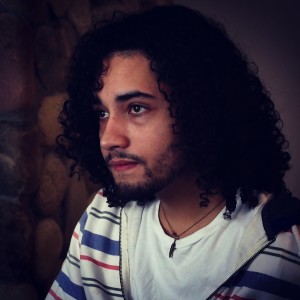
In December, Hit and Run History was awarded a $10,000 pre-production Massachusetts Foundation for the Humanities grant for Stephano. In January, it became the first joint production of Rhode Island PBS and the Cape Cod Community Media Center.
DAY 200
Hit and Run History Wins 2nd Grant from Mass Humanities
$10,000 to Cape Cod Filmmakers exploring Shakespeare’s Shipwreck

Lightning does strike twice, and Cape Cod’s Gumshoe Historians couldn’t be happier to be the target. Fittingly, this story begins with a hurricane, or in this case, The Tempest, the final play of William Shakespeare. That is the latest subject the crew of Emmy-nominated Hit and Run History (HRH) has turned their sights on. Now with a $10,000 pre-production grant awarded on December 15 by the Massachusetts Foundation for the Humanities, “Stephano: The True Story of Shakespeare’s Shipwreck” can be told.
The Globe Theater and the Bard. Jamestown and Pocahontas. The Mayflower and Squanto. One man connects them all — Stephen Hopkins. When the Pilgrims sailed from England in 1620, a late-coming passenger was the only aboard who already been to the New World. Hopkins’ life up to that point was already harrowing enough for any person.
In 1609, Hopkins had sailed with the new Virginia Governor to Jamestown when their ship, Sea Venture, wrecked on Bermuda. Later ashore, Hopkins begged for his life in chains after condemned to death for mutiny. A newly-constructed ship carried the castaways to Jamestown, but salvation was short-lived. The handful of surviving colonists had resorted to cannibalism. Present at the marriage of Pocahontas, Hopkins returned with her and her husband to England. There, the story of the Sea Venture inspired Shakespeare, with Hopkins immortalized as the mutinous drunken butler Stephano.
A decade later, his harrowing experiences in North America were invaluable to the fledgling Plymouth Colony. Host to Samoset and Squanto, and emissary to Massasoit, Hopkins had seen how quickly a European settlement could fail without good relations with the local tribes.
“Not only does this new grant acknowledge Stephano is a story worth telling,” says HRH creator and host Andrew Giles Buckley, “but it reaffirms the scholarly and educational value of our approach to storytelling.” WGBH dubbed the series “snackable history.”
Last week’s Mass Humanities grant is actually the second awarded to HRH. In 2010, their very first Social Media Outreach Grant was voted unanimously to Buckley and crew for their ongoing series on the Columbia Expedition.
“Mass Humanities is very happy to fund another Hit and Run History project,” says Pleun Bouricius, Mass Humanities’ Director of Grants & Program. “What sets Stephano apart is Hit and Run History’s ability to take the viewer into the moment things are happening. This project will bring a fascinating and entertaining story to thousands of young Americans, and will also encourage them to think about the ways in which history shapes the world they live in.”
London, Bermuda, Jamestown, Plymouth. It sounds like an ambitious schedule, except that HRH’s other series follows the first American voyage ‘round the world – the Columbia Expedition. But they won’t be setting that odyssey aside.
“Columbia is the work of a lifetime,” says Buckley. “But Stephano is a story of my family.” His mother is a Hopkins from East Orleans, and his middle name descends Stephen Hopkins’ son, Giles Hopkins. Buckley grew up hearing about his scrappy Mayflower ancestors. “Now I’ve been given the chance to learn more about them and share that story, and adventure, with the world.”
The preproduction grant will be help pay for research and scriptwriting, shooting of a high-quality trailer and creation and implementation of a fundraising plan. The goal is to assemble the crew, story and funding necessary to film a finished documentary.
A grassroots production of the Cape Cod Community Media Center, HRH has received numerous accolades and grants for bringing global historical adventures to underserved audiences. Less Ken Burns, and more Anthony Bourdain in style, HRH’s have been featured WGBH’s History site and broadcast on Rhode Island PBS.

Mass Humanities conducts and supports programs that use history, literature, philosophy, and the other humanities disciplines to enhance and improve civic life in Massachusetts. Established in 1974 as the state-based affiliate of the National Endowment for the Humanities (NEH), we are an independent programming and grant-making organization that receives support from the NEH and the Massachusetts Cultural Council as well as private sources.
